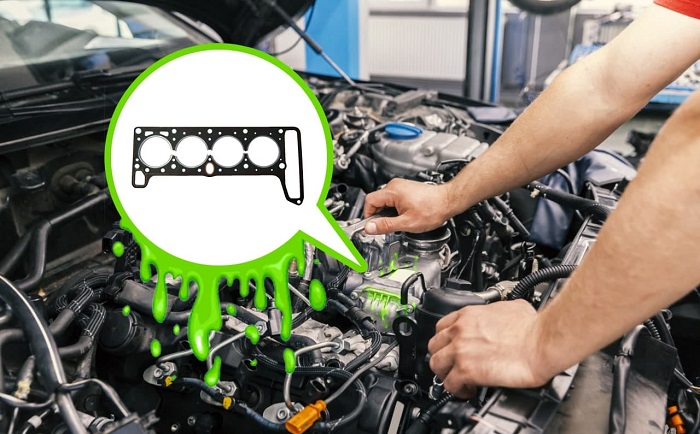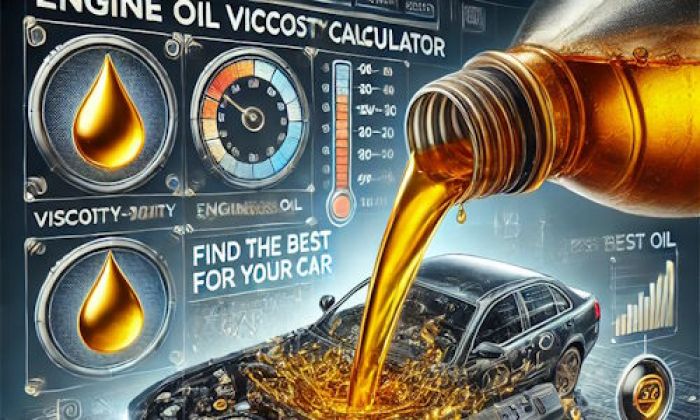Head gasket is basically the seal between engine block and engine head. Wikipedia has already done detailed description of the part, so we won't do that again.
The main task of the head gasket is to ensure that combustion gases, coolant, and oil never meet each other and always travel in their own passages and galleries. Once the head gasket is blown, these liquids and gases start mixing with each other and leaking causing quite bad troubles for the engine.
Today, we'll discuss the main symptoms of a blown head gasket so that you knew when to stop your vehicle and call for help.

Symptom 1: White smoke from exhaust
It's actually not smoke but steam. The thick white steam from exhaust means that the head gasket is blown and antifreeze leaks into combustion chambers. It evaporates quickly because of high temperature and the steam comes out of the exhaust pipe. The thicker the steam, the worse the problem.
It's not safe to drive the car with thick white steam from the exhaust pipe because your engine may overheat, lose coolant and also get mechanical damages because of severe deviations in the process of its work. Thought, there are also other reasons of white steam and smoke from exhaust.
Symptom 2: Engine overheating
Once the gasket is blown, your vehicle starts losing antifreeze. In majority of cars there is no special alarm light for low antifreeze level, so you may just not know about the loss. Small amount of coolant will result in overheating because the liquid won't have enough time to cool down in radiator. If the level of coolant becomes too low, there will be an airlock in the system, and the coolant will stop traveling through the passages. This will result in quick engine overheating. If you don't stop the engine, it may be broken soon because of extreme temperatures.
Symptom 3: Bubbles in coolant reservoir
It's sometimes really important to look under the hood of your car and to check whether the antifreeze is OK. If you see bubbles coming out of the pipe that is connected with the coolant reservoir, there could be two reasons. The first: you recently changed antifreeze and there are some airlocks that are coming out, and that's fine. The second: you have a blown head gasket and your vehicle needs repair.
Symptom 4: Oil in coolant reservoir
In different cars the construction of oil and coolant circuits are different. When the head gasket is blown, some part of oil can get to cooling system. This will form dark mixture with foam in the coolant reservoir. Also, oil stains will be there on the surface of coolant. In some engines this symptom often occurs when heat exchanger is broken.
Symptom 5: Coolant in oil pan
When the engine with the blown head gasket is on, the coolant will be evaporated because of high temperatures in the combustion chamber. But when the engine is off, some coolant may get to oil pan and mix with oil. This will form special mixture which produces a lot of foam.
Take the dipstick out of the engine and look at the oil. If it's foamy, white, green, red, you probably have a blown head gasket in your engine. It's highly dangerous for the engine to work with oil-antifreeze mixture instead of pure oil.
Symptom 6: Coolant loss with no visible leaks
There are some drivers who always check the liquids in their cars. They will get to know about the blown head gasket much sooner than you and me, because they will see unexplained coolant loss.
If you don't see any leaks, but the coolant disappears quite fast, there is no other way for the liquid to leak but inside the engine.
Symptom 7: Loss of power
Sometimes the head gasket is blown in such a way that it allows the compressed air-fuel mixture to escape from the combustion chamber. This will result in sharp drop of compression in a certain cylinder, so the cylinder won't work. The engine will lose power immediately. But in this case, you may feel lucky, because this is the least harmful way the head gasket can get out of order.
Symptom 8: External leaks of coolant or oil
Sometimes the gasket can be blown near the edge, so it will allow oil or antifreeze to leak from the engine externally. In this case, you'll see drops of liquids down your engine's cylinder block just under the place where engine head is mounted. It's not a dangerous way the gasket blows, but it still needs repair because engine oil or antifreeze level will drop fast and this may cause more serious problems.
What can cause head gasket failure?
1. Repeated overheating. When you heat up your engine to uncomfortable temperatures, the head gasket starts changing its shape and it may blow any moment.
2. Low level of antifreeze. Again, it leads to overheating and causes the same trouble. Watch that level of coolant sometimes and pay attention to engine temperature arrow on your dashboard.
3. Bad parts. If you already changed the head gasket in your vehicle and it's blown again, the trouble might appear because of poor quality of the parts.
4. Bad service station workers. The head gasket will only serve for many years if the engine head is mounted correctly. Producers recommend the needed bolt tightening force, and you can control it with special instrument only. Otherwise, the gasket may be broken right after it's installed.
5. Production defects. Some producers are known to have many manufacturing defects in engines. This is usually true for very cheap cars that are assembled with a lot of manual labor in Third World countries.
How much to change the head gasket?
It depends much on the problems that occurred when the head gasket was blown. The gasket itself isn't expensive at all, but the process of replacing is quite labor intensive. A quick investigation through forums will show you that the blown head gasket repair will cost around $1500 to $2000 on average. But of course, it depends on the additional damages, the car brand and year and other factors. Sometimes the gasket itself will cost more than that.
About the authors
The CarAraC research team is composed of seasoned auto mechanics and automotive industry professionals, including individuals with advanced degrees and certifications in their field. Our team members boast prestigious credentials, reflecting their extensive knowledge and skills. These qualifications include: IMI: Institute of the Motor Industry, ASE-Certified Master Automobile Technicians; Coventry University, Graduate of MA in Automotive Journalism; Politecnico di Torino, Italy, MS Automotive Engineering; Ss. Cyril and Methodius University in Skopje, Mechanical University in Skopje; TOC Automotive College; DHA Suffa University, Department of Mechanical Engineering






Add comment